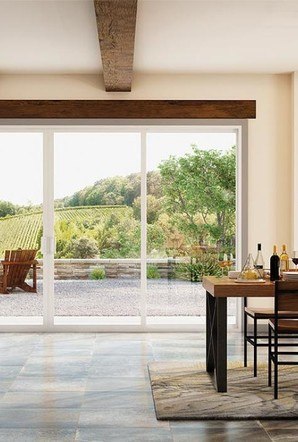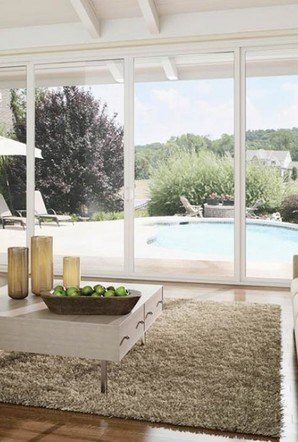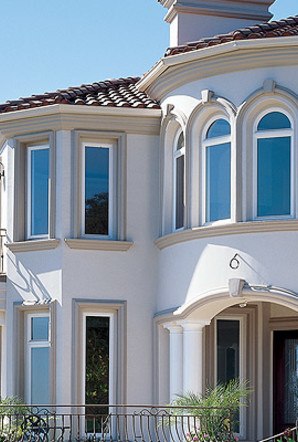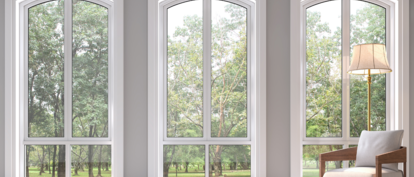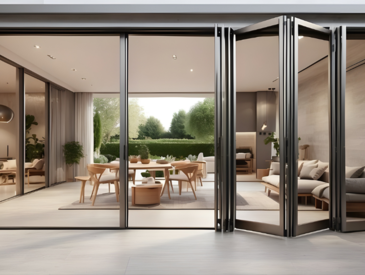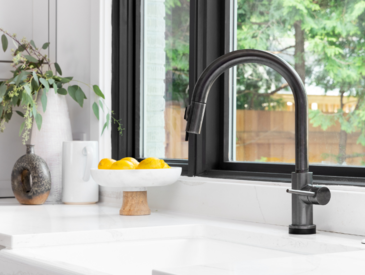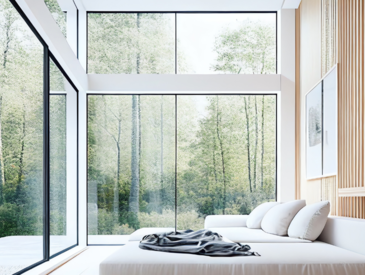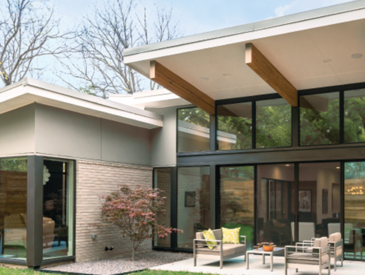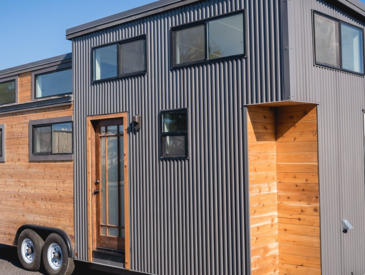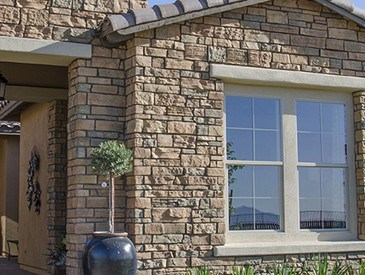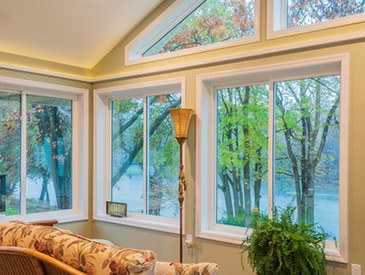Gothic windows, with their soaring heights and elaborate stained glass, are one of the most recognizable historical window styles. While they were originally used in medieval churches and cathedrals, today, Gothic-inspired styles are making a comeback in both historical and new homes. Let’s take a walk back in time, and then explore modern applications for Gothic windows.
The history of Gothic architecture
Gothic architecture flourished in Europe from the Middle Ages through the Renaissance. Originating in 12th-century France and lasting into the 16th century, Gothic architecture evolved from Romanesque styles and is known for its tall, vertical elements and light-filled interiors.
The Gothic style was the first to use pointed arches, ribbed vaults (high arched ceilings), and flying buttresses (arched supports), which played a key role in the development of Gothic windows. By supporting taller, more open spaces, these new elements allowed the addition of heavy, floor-to-ceiling windows, and large stained glass windows in Gothic architecture became common.
The style’s emphasis on height, light, and ornate detail had a big impact on medieval Europe. Gothic architecture is a defining look of European cathedrals, including the well-known Notre-Dame de Paris, Chartres Cathedral, and Cologne Cathedral. It also influenced the design of castles, palaces, universities, and town halls, and it continues to impact modern-day architecture.
What are Gothic windows?
Gothic windows have a unique and recognizable style with pointed arches and intricate designs. Gothic arched windows help distribute weight, allowing for taller and wider window openings fit with heavy glass. The glass is supported by tracery, a type of ornamental stonework.
Gothic windows were traditionally stained glass and would have shown biblical stories and saints, but in today’s non-religious buildings the glass serves a decorative purpose. The stained glass also contributes to the soft yet bright light within Gothic buildings and is often colored and patterned to create a “heavenly” feel.
Gothic windows play an important role in the impressive visual impact of Gothic architecture. Their height and grandeur enhance the vertical lines of the buildings, drawing the eyes upward and creating a sense of awe and wonder.
Types of Gothic Windows
Gothic windows vary from the traditional, historical style to adaptations in more recent designs. From the stained glass masterpieces of medieval cathedrals to modern Gothic windows in houses, this style is more adaptable than you may think.
Gothic Stained Glass Windows
Gothic stained glass windows are masterpieces of color. Mostly used in cathedrals and churches, these Gothic windows serve both an educational and aesthetic purpose, illustrating biblical stories and the lives of saints while also transforming the interior space with colored light. They’re usually handcrafted using coextrusion, a process of mixing colored materials into the glass before it cools.
Gothic Arch Windows
Gothic arch windows are a classic standby of this architectural style and can be found in nearly every Gothic building. Arched windows are characterized by a pointed apex, which enabled the construction of the impressive, sky-reaching walls seen in Gothic cathedrals. The arches not only supported the weight of the roof but also enhanced the vertical emphasis of Gothic design, symbolizing the bridge between earth and the divine.
Gothic Rose Windows
Rose windows are a hallmark of Gothic architecture. They’re circular windows inset with smaller panes of stained glass in the shape of a flower. They’re one of the Gothic style's most iconic features, traditionally positioned on the west front of cathedrals to create a beautiful focal point at sunset. The designs are geometrically complex, featuring symmetrical patterns that represent the infinite nature of God.
Victorian Gothic Windows
The extravagant look of Gothic windows appealed to architects in the Victorian era, who gave them even more “flair” that reflected the era’s love for ornamentation and excess. Victorian Gothic windows had even more detailed ornamentation, complex stained glass designs, and new shapes, like spade-shaped top panels. They were used in Victorian churches, but also institutional buildings, universities, and homes to showcase wealth and status.
Modern Gothic Windows
Modern Gothic windows reflect the enduring influence of the Gothic style. These windows often incorporate traditional features like pointed arches and tracery but use modern materials and building techniques. Elements of Gothic windows can be seen in both religious and secular buildings, including both historical and new construction homes. Modern Gothic windows blend the old with the new, proving that this medieval style still has a place in the 21st century.
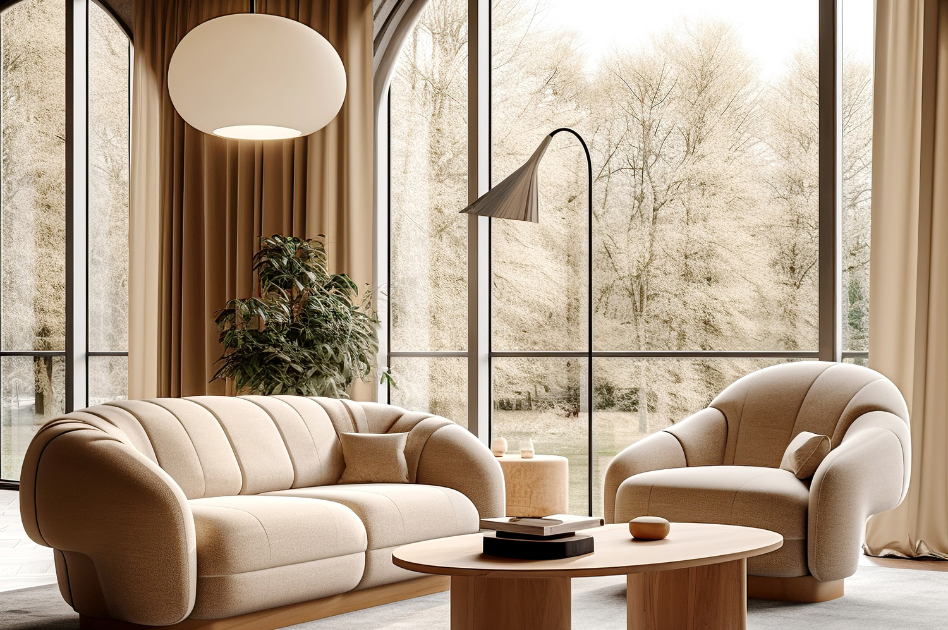
Are Gothic windows right for your home?
It’s easy to be captivated by the vibrant colors and soaring heights of Gothic windows. But deciding whether they’re right for your home involves considering cost, architectural style, and installation logistics. Here’s a breakdown to help guide your decision.
Cost of Gothic Windows
Gothic windows are often more expensive than standard windows due to their intricate, handcrafted designs. The costs can vary widely depending on the materials used (such as the type of glass and framing), the complexity of the tracery, and whether the windows are custom-made. For high-quality replicas or authentic designs, you might be looking at several thousand dollars per window.
Matching Your Architectural Style
Gothic windows fit best with homes that have matching architectural elements, like pointed arches on doors, porches, dormers, or roof gables. Gothic Revival windows fit perfectly with these features. They can also work with other traditional styles, such as Victorian or Tudor homes, which often feature elaborate decorative elements. Always check your local building regulations and neighborhood association rules, which might limit the type of window modifications allowed, especially in historic districts.
New Construction vs. Existing Homes
Installing Gothic windows in an existing home can be more complex than new construction window replacement. The shape or size of the existing window openings often need to be altered to accommodate the Gothic style, which might require the expertise of a structural engineer and a skilled contractor. It’s easier to incorporate Gothic windows into a new construction project where they can be planned into the original design.
Energy Efficiency and Maintenance
Traditional Gothic windows, especially those with authentic stained glass, may not offer the same energy efficiency as modern windows. You should also consider the maintenance requirements, as Gothic windows with intricate designs and stained glass may need more upkeep than standard windows.
Explore Gothic windows and more
While Gothic windows can add dramatic flair and historical elegance to a home, they require careful planning and consideration of practical aspects like cost, energy efficiency, and maintenance.
Traditional Gothic windows are out of reach for many homeowners, but you can work with a professional to incorporate elements of the style you love, like arches and colors. Check out our collection of radius windows, which include circular shapes, half circles, and arched tops. Or visit the Inspiration Gallery for even more window ideas.













